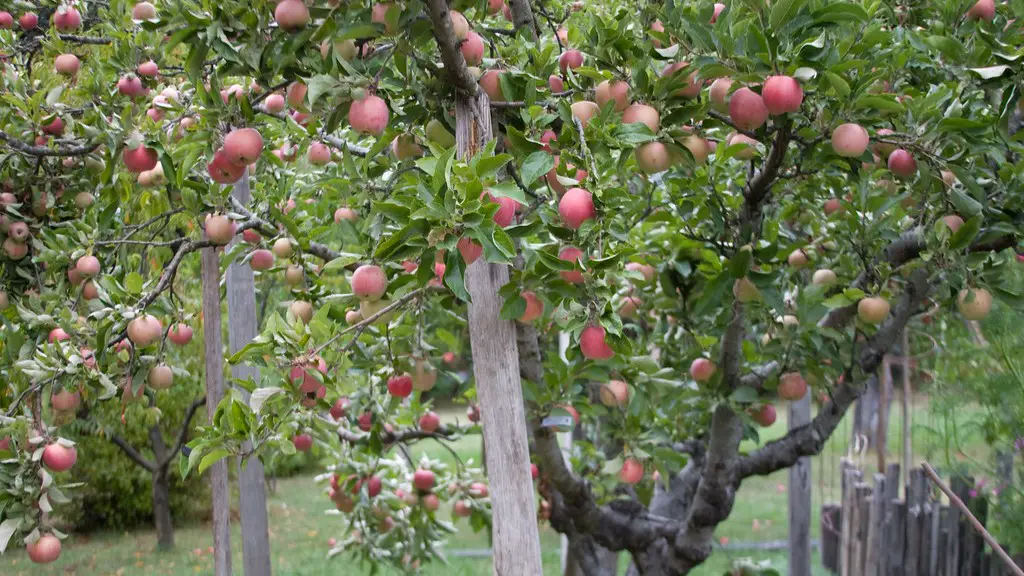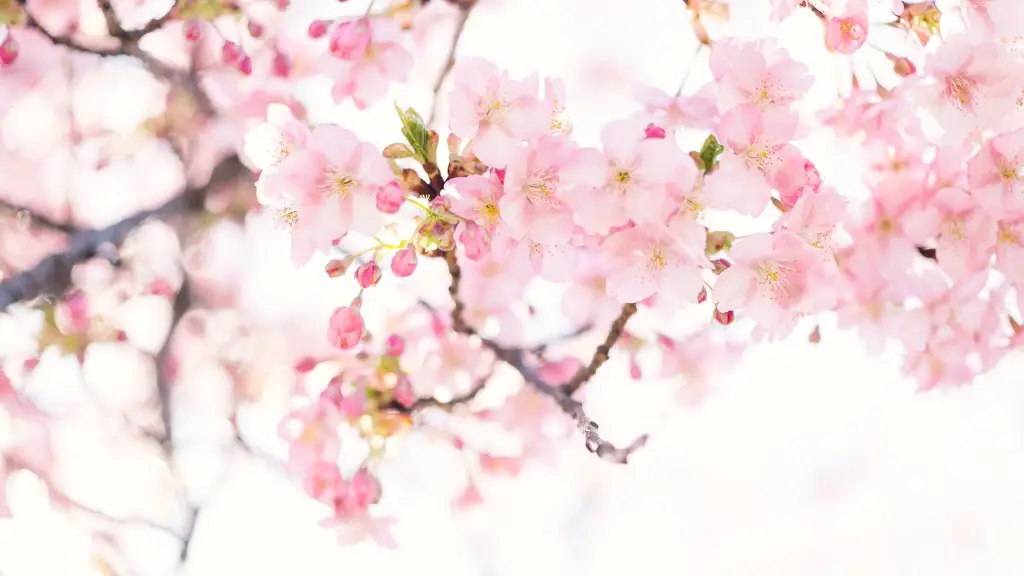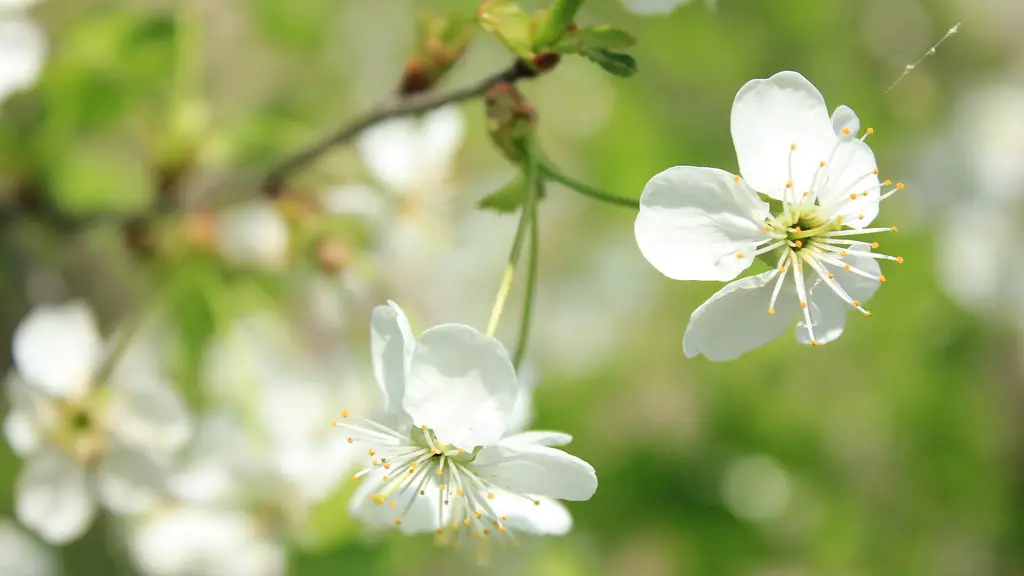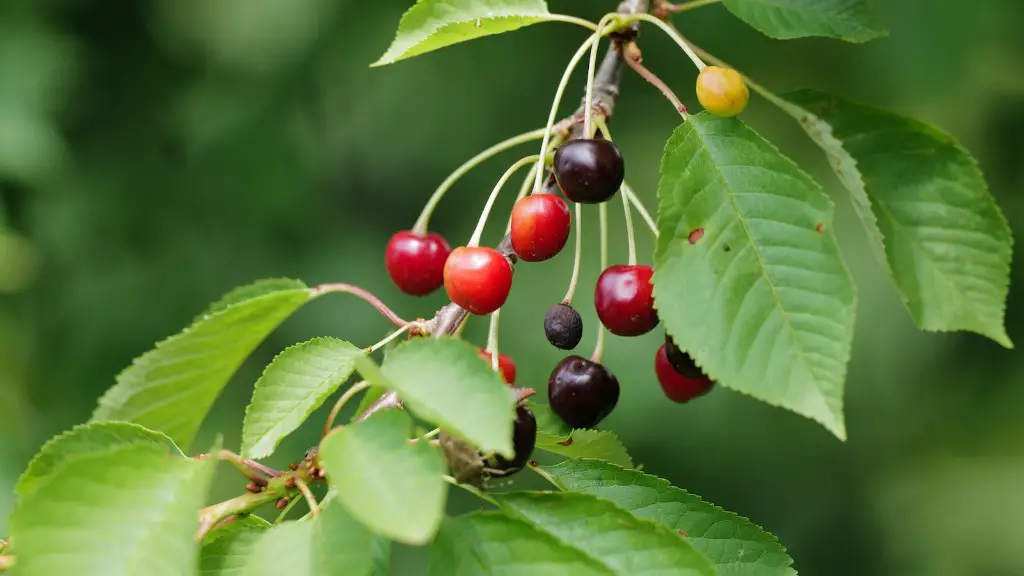What is an Apple Blossom Tree? An apple blossom tree is a type of deciduous tree in the U.S. and Europe, typically of the Malus domestica or wild apples genus. Apple blossom trees often bear bright pink or white fragrant flowers, depending on the variety. They produce flavorful fruits that are usually eaten raw or cooked in dishes. In the U.S., apple blossom trees are often associated with New England and Pennsylvania, as they were originally brought over by European settlers in the 1600s and 1700s.
Apple blossom trees prefer full sun and well-drained soil with a neutral pH balance. They are very hardy, so young trees can still bloom even in slightly cool temperatures. They enjoy the moist mild climate of the mid-latitudes, but can also tolerate frost. Apple blossom trees are easy to care for and can be easily pruned and trained into different shapes.
The bark of an apple blossom tree typically ranges in color from light grey to dark brown, depending on the variety. The leaves are commonly dark green and glossy, with a glossy finish that shows off the veins. When blossoms appear, they offer a striking white or pink hue. It’s important to note that while they typically bloom in the late spring or early summer, apple blossom trees can flower at different times, depending on where they are located.
Apple blossom trees usually flower anywhere from two to three weeks after the trees have emerged from dormancy. The apple blossom itself ranges in size, as some are very large and others are smaller. It is important to note that while some apple trees will produce edible apples, many varieties are best used for ornamental purposes only.
Once the blooms are pollinated and turn to apples, the delicious fruit can be plucked in the fall. Unfortunately, these apples only last for a few weeks and must be utilized quickly. Though the apples do not last, apple blossom trees can provide a beautiful, seasonal display for many years to come. They are also helpful for providing birds and other wildlife with food and shelter.
Varieties of Apple Blossom Trees
There are a variety of Malus domestica or wild apples genus to choose from when it comes to apple blossom trees. Popular options include the Red Delicious, Golden Delicious, Granny Smith, McIntosh, and the Winesap. Depending on the region, there are many varieties of apple blossom trees, some of which bear edible fruit and some of which are just aesthetically pleasing.
When growing an apple blossom tree, it is important to research the variety before purchasing. All varieties of apple blossom trees will benefit from regular pruning and training to produce fruit. As the trees age, they can become disease prone and troublesome, so it is important to choose varieties that offer resistance to disease.
Choosing the best variety for your region is essential to the success of growing apple blossom trees. This ensures that the tree will receive the proper amount of sunlight, water and nutrients. Striking the right balance with your variety of choice can result in an abundant crop of gorgeous blossoms and a delicious harvest when the right time of year arrives.
Planting and Caring for Apple Blossoms
The key to successful planting and caring for an apple blossom tree is to perform research before deciding which type of apple tree is best suited for your location. The trees should be planted in a location that receives ample sunlight, as well as have a well-drained and slightly acidic soil, as this will encourage more extensive root systems.
It is also recommended that the trees be pruned and trained regularly. Pruning and training the branches will ensure the tree grows in the desired shape and size and encourages fruit production. When pruning, it is important to be careful not to prune too much, as this can kill the apple blossom tree. It is also essential to fertilize the tree every 3-4 weeks in spring and summer. This will help ensure the tree thrives and produces abundant flower blossoms and fruit.
Additionally, apple blossom trees need to be watered regularly. During the warmer summer months, the tree should be watered 3-4 times per week, while during the colder winter months, the tree should be watered once or twice a week. Additionally, it is important to mulch the soil around the tree in order to conserve water and keep weeds at bay.
Pruning and Training
The process of pruning and training an apple blossom tree is an essential part of its growth and production process. Pruning and training the branches in a certain way can help the tree to produce more flowers as well as fruit. Additionally, pruning and training will also help the tree to have a desired shape and size. This is typically done by either pruning the branches to a certain length, or by training them with a certain technique.
Typically, pruning should be done in the late winter or early spring. This will help ensure the tree has ample time for the new growth to appear before the blossoms. Additionally, it is important to make sure that the pruning is done correctly, as incorrect pruning can cause harm to the tree. Furthermore, it is important to note that the pruning and training of the tree should be done as the tree is growing and should continue until the desired shape and size is achieved.
Pests and Diseases
Unfortunately, an apple blossom tree may be at risk of pests and diseases. These include aphids, mites, slugs, and scale insects. In addition, the tree can suffer from certain diseases such as bacterial blight, leaf blight, and fire blight. There are several ways to protect the tree from these pests and diseases, such as pruning regularly, monitoring for signs of disease, and using insecticides or fungicides.
Additionally, it is important to ensure that the tree receives proper care and is regularly inspected for any signs of pests or diseases. Furthermore, making sure the tree is planted in an area that receives adequate sun exposure, water, and soil that is not overly acidic will also help to protect the tree from potential pests or diseases.
Harvesting
When it’s time to harvest the apples from an apple blossom tree, it is important to wait until the ripeness of the apples can be judged. Apples that are picked early will likely be sour and inedible, while ripe apples will be sweet and ready to be enjoyed. When harvesting apples, it is important to exercise care as well, so that the apples are not bruised or damaged.
Harvesting apples involves gently shaking the apple off the tree and into a bucket or basket. If the apples are too high up, it may be helpful to use a pole or ladder to reach them. Additionally, when harvesting apples it is important to wear protective clothing, such as gloves and long sleeves, to prevent scratches.
Once the apples have been harvested, it is important to use them quickly. Unpicked apples can only last for a few weeks, so it is essential to utilize them quickly. It is also important to store the apples in temperatures that are cool and consistent, so that they do not spoil.
Advantages
Apple blossom trees offer numerous advantages to gardeners and homeowners. They bring a beautiful display of flowers, with their vibrant colors adding visual appeal to any garden. They also provide a delicious harvest at the end of the summer, with various edible varieties available. Apples can be eaten fresh, cooked, or even turned into delicious recipes such as applesauce, cider, and pies.
Apple blossom trees are also beneficial to wildlife, providing birds and other animals with food, shelter, and shade during the summer months. It also helps to regenerate the soil with their extensive root systems. Finally, apple blossom trees can also be used as ornamentals, adding a bit of aesthetics to any garden.





